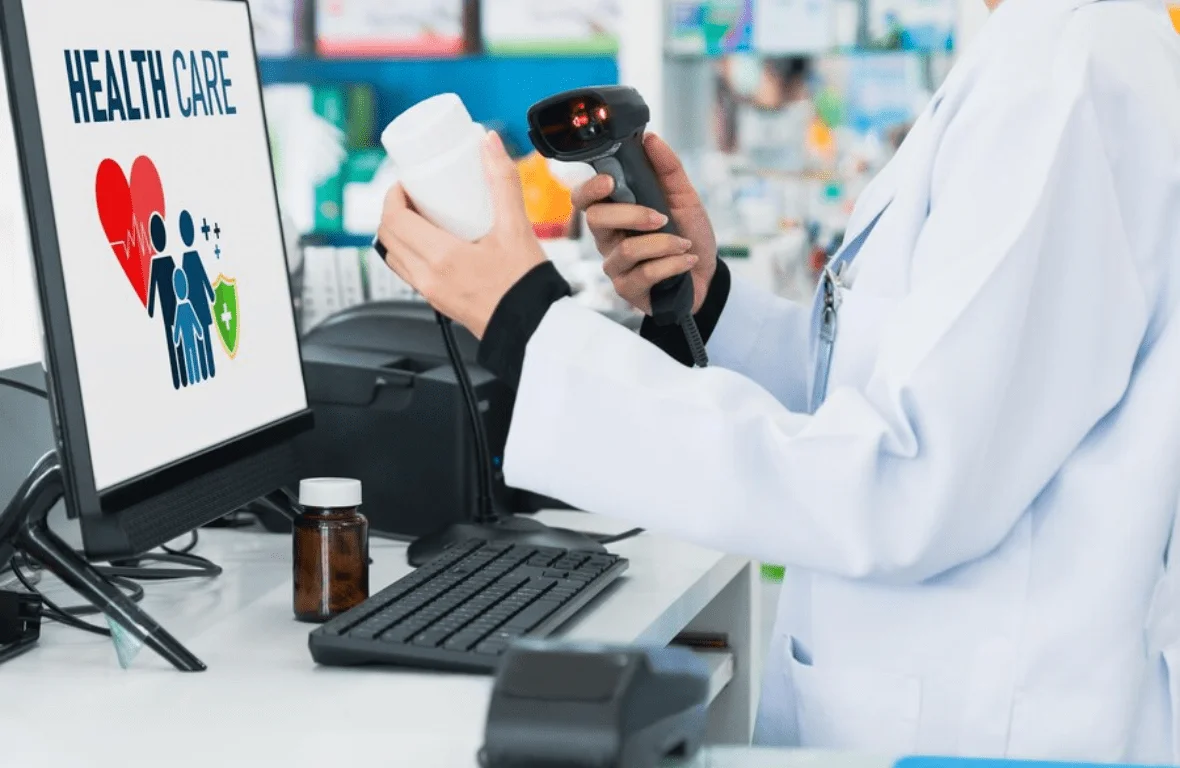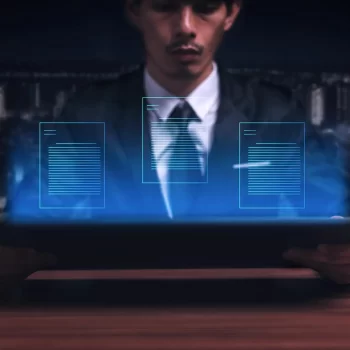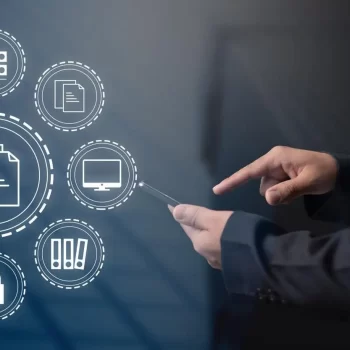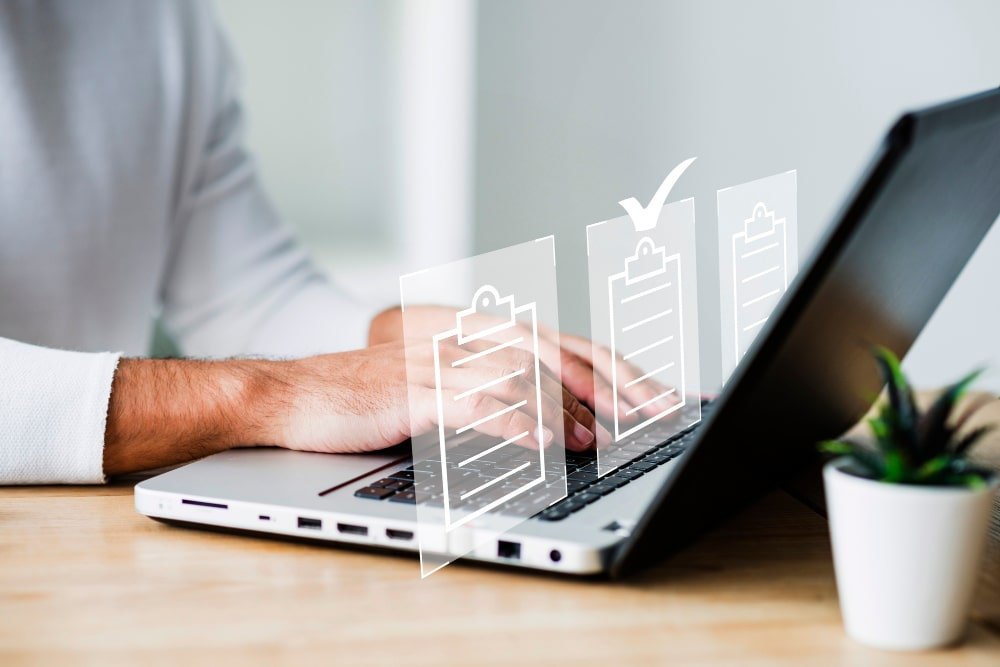As a critical decision-maker in a hospital, you must manage many assets daily, making inventory management time-consuming and tedious. Furthermore, you need to keep track of an ever-growing number of patients, from when they enter your healthcare facility until they pick up their prescriptions at the pharmacy. So, how do you deal with these rising inventory complications, tracking materials, and patient validation? Using the right technology in your hospital can make a huge difference.
Introducing barcoding technologies into your hospital medication management processes can be a significant investment and cost-effective solution to these current problems. Despite the challenges posed by the COVID-19 outbreak, the demand for barcode scanning in healthcare is expected to increase. According to Grand View Research, the global 2D barcode reader market size was valued at USD 6.79 billion in 2020 and is expected to expand at a compound annual growth rate (CAGR) of 6.7% from 2021 to 2028.
Let’s see how barcode technology has become vital to healthcare management!
Related blog: Seamless IT Asset Onboarding is the Need of an Hour for Banks
What is Barcode Technology in Healthcare? How does barcode scanning work?
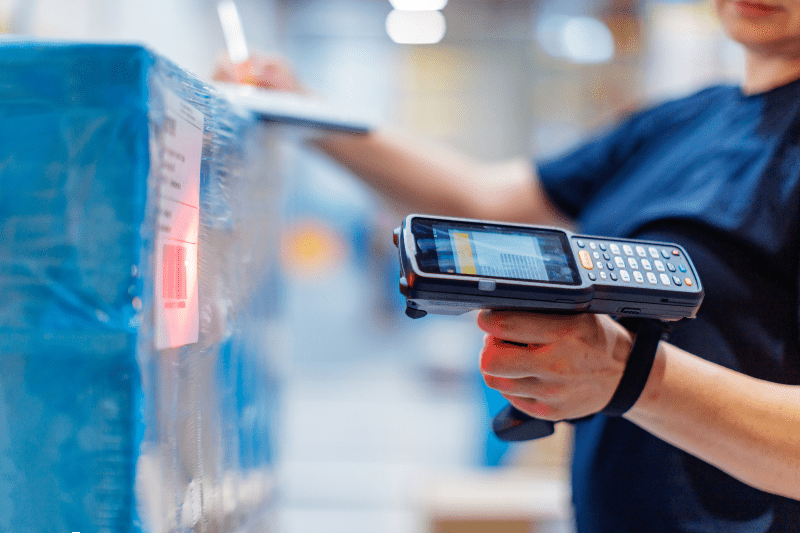
Barcode technology uses medical barcode scanners to read and process information encoded in barcodes. In healthcare, these barcodes can be found on everything from patient wristbands to medication packaging. They store critical information that can be quickly accessed by scanning the barcode with an online barcode scanner, reducing the chances of human error.
Barcode scanning is a simple yet powerful process crucial in many industries, especially healthcare. Here’s a closer look at how it functions:
- The Barcode Storing Information: A barcode is a series of black-and-white lines or patterns encode information, such as product numbers, patient IDs, or medication details. Barcodes might be found on patient wristbands, medication packaging, or lab specimens in healthcare. The data stored in these barcodes ensures accuracy in medical processes.
- The Scanner Reading the Barcode: A medical barcode scanner is a device that reads the information encoded in a barcode. It emits a light source, typically a laser or LED, onto the barcode. The black and white patterns reflect the light differently, creating a distinct pattern of light and dark areas that the scanner can detect.
- Decoding the Barcode: Once the barcode scanner technology detects the light patterns, it converts them into an electrical signal. This signal is then processed by the scanner’s internal decoder, which interprets the pattern of light and dark areas as specific data. This data is then sent to a computer system, which can be used to update records, verify patient information, or track inventory.
- Integrating with Healthcare Systems: The scanned data is often integrated directly into electronic health records (EHR) or inventory management systems in healthcare settings.
For example, when a nurse scans a patient’s wristband before administering medication, the system cross-references the barcode data with the patient’s medication orders to ensure that the correct drug and dosage are given.
- Ensuring Accuracy and Reducing Errors: One of the main benefits of barcode scanning in healthcare is its ability to reduce human errors. By automating the data entry process, barcode scanning minimizes the risk of mistakes, such as administering the wrong medication or mislabeling a test sample. This not only enhances patient safety but also improves the overall healthcare operations.
Understanding how barcode scanning works is essential for appreciating its role in healthcare. From reading and decoding the barcode to integrating data into healthcare systems, each step in the process is designed to ensure accuracy and efficacy. This technology is critical in modern healthcare, helping providers deliver safer, more reliable patient care.
Uses of Barcode Technology in Healthcare
The importance of barcode technology in healthcare is growing with advances in scanning. This technology offers a simple, affordable solution to all the complex issues plaguing the healthcare sector. Although barcodes have different uses in this field, they all have one common goal: to keep patients safe. Here are five examples of how barcodes are helpful in every aspect of the healthcare industry:
Surgical Instrument Identification
Manually assembling precise sets of surgical tools can be time-consuming and prone to errors. Barcode technology simplifies this process by allowing each instrument in a surgical tray to be scanned and checked against a count sheet as technicians assemble it. An alert is sent immediately if the wrong instrument is selected or an expired one is detected.
By utilizing barcode asset tracking software, healthcare facilities can track and trace each instrument from disinfection through patient use. This technology ensures that every instrument is accounted for, providing a complete history of its use, enhancing patient safety, and streamlining asset management. Accurate tracking also allows doctors and their support teams to focus more on patient care rather than worrying about the availability or accuracy of medical devices.
Patient Identification
Patient safety starts with accurate identification. Many hospitals now use barcoded wristbands to ensure the right patient receives the correct treatment. By scanning the wristband, healthcare providers can verify patient identity, access electronic medical records, and update information in real time. This reduces the risk of errors and improves productivity and patient security.
Specimen Collection
Barcode technology plays a critical role in ensuring the accuracy of specimen collection. By comparing patient wristband data with information stored in a portable device or bedside laptop, barcode systems confirm that the correct specimen container is being used for the required tests. Barcodes printed on specimen containers include the time and date of collection, reducing labeling errors and ensuring that laboratory processing is accurate from collection to results reporting.
Blood Transfusion Safety
Blood transfusion safety is another critical area where barcode technology is indispensable. The FDA mandates that all blood and blood components collected after April 26, 2006, must have barcodes containing information such as blood type, product code, and blood donor identification number. By scanning barcodes, healthcare providers can ensure that the correct blood type is administered to the right patient, significantly reducing the risk of transfusion errors.
Inventory Management and Track and Trace Systems
Operative inventory management is crucial in healthcare, where the availability of medical supplies can directly impact patient care. Barcode systems allow healthcare facilities to track inventory levels in real-time. For example, staff can scan a medication’s barcode at the hospital pharmacy, triggering an automatic resupply if inventory falls below a certain level. Barcodes can also be used to trace equipment back to the manufacturer, manage repairs, and ensure compliance with safety standards.
Vaccine Management
Barcodes on vaccine vials allow healthcare providers to track the administration of vaccines, monitor inventory, and ensure that patients receive the correct vaccine. This is particularly important in large-scale vaccination programs.
Track and trace systems help manage materials throughout the healthcare facility. Barcodes enable staff to track who last used a product, which patient it was used for, and its current status. This level of traceability ensures that each patient receives the proper care, reduces waste, prevents improper medical care, and helps avoid costly litigation.
Electronic Health Records (EHR) Integration
Barcodes facilitate the seamless integration of patient information into electronic health records. Healthcare providers can quickly access and update patient data by scanning barcodes, improving record-keeping accuracy.
Integrating barcode technology into healthcare offers numerous benefits, from improving patient care to ensuring accurate specimen collection. By leveraging these capabilities, healthcare facilities can provide safer, higher-quality patient care.
Why is a Barcode Important?
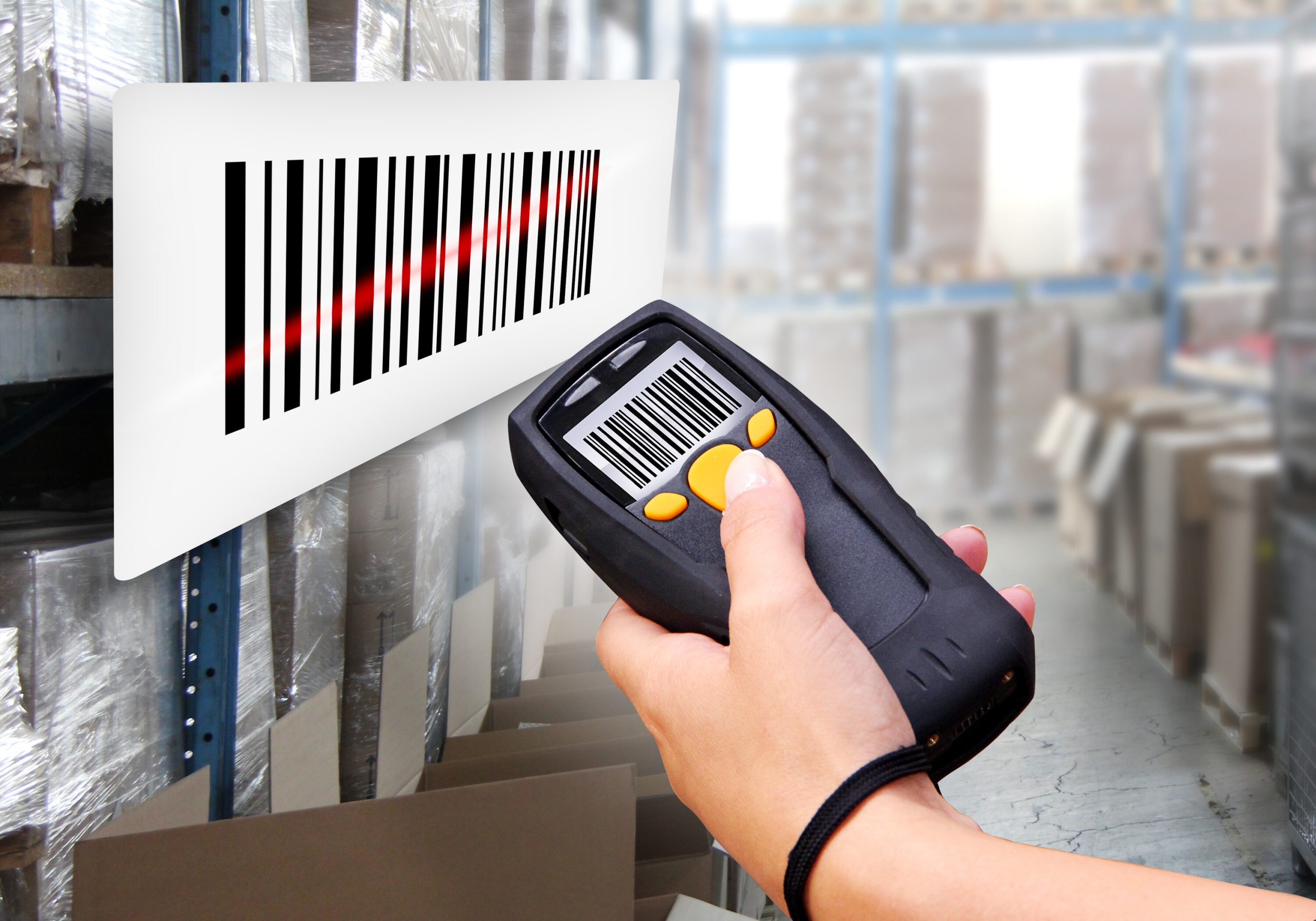
Barcode technology has become integral to many industries, and its significance in healthcare is particularly profound. By understanding how barcode scanning works, we can better appreciate its vital role in ensuring accuracy and safety in medical settings.
- Enhancing Patient Safety: One of the primary reasons barcode technology is essential in healthcare is its impact on patient safety. How barcode scanning works directly contributes to reducing medication errors, a leading cause of preventable harm in hospitals. By scanning a patient’s wristband and medication packaging, healthcare providers can verify that the right patient receives the correct medication at the appropriate dosage and time. This process minimizes the risk of administering the wrong drug, which can have severe or even fatal consequences.
- Improving Operational Performance: Barcode technology streamlines various healthcare operations, from patient admissions to inventory management. When a barcode is scanned, the information is instantly processed and integrated into the hospital’s electronic health records (EHR) or inventory systems. This automation reduces the time spent on manual data entry and allows healthcare providers to focus more on patient care. Barcode scanning works in real-time to ensure that records are always up-to-date, leading to more patient management.
- Reducing Human Errors: Human error is inevitable in any manual process, especially in a fast-paced environment like healthcare. How barcode scanning works to reduce these errors by automating the data entry and verification processes. For instance, when a lab technician scans a specimen’s barcode, the system automatically matches it to the correct patient, eliminating the possibility of mix-ups. This accuracy is critical in diagnosis and treatment, making barcode technology indispensable.
- Ensuring Compliance and Traceability: In healthcare, compliance with regulations is non-negotiable. Barcode technology helps healthcare facilities maintain accurate records of medications, procedures, and patient. interactions, essential for audits and regulatory compliance. Barcode scanning also enhances traceability, allowing healthcare providers to track the entire journey of a medication or medical device, from procurement to administration, ensuring that all processes meet stringent safety standards.
- Optimizing Inventory Management: Effective inventory management is crucial in healthcare, where the availability of medical supplies can be a matter of life and death. Barcode technology allows healthcare providers to monitor stock levels in real-time, ensuring that critical items are always available when needed, and how barcode scanning works in inventory management by quickly updating the system whenever an item is used, ordered, or restocked, preventing shortages and reducing waste.
- Improved Accuracy in Medical Records: Manual data entry is prone to errors, which can lead to severe consequences in a healthcare setting. Barcode scanners automate entering patient information, medication details, and other critical data into electronic health records (EHR). This improves the accuracy of medical records, reducing the likelihood of mistakes and ensuring that healthcare providers have reliable information at their fingertips.
- Improved Patient Experience: Barcode scanners enhance accuracy and safety, improving overall patient experience. Patients can have greater confidence in their care, knowing that their treatment is accurately tracked and administered. Additionally, the time saved through streamlined processes means that healthcare providers can spend more time attending to patients’ needs.
- Cost Savings: While the initial investment in barcode scanning technology may be significant, the long-term cost savings can be substantial. Improved inventory management, reduced waste, fewer medication errors, and increased operational efficiency all lower overall healthcare costs. These savings can then be reinvested into further enhancing patient care.
The importance of barcode technology in healthcare cannot be overstated. Understanding how barcode scanning works makes it clear that this technology is essential for enhancing patient safety, improving operational functions, reducing errors, ensuring compliance, and optimizing inventory management. As healthcare continues to evolve, the role of barcode technology will only become more significant, helping providers deliver high-quality and safe patient care.
Related blog: Importance of Tracking Software Licenses with IT Asset Management Software
Final Note

The healthcare industry constantly evolves, introducing new procedures, medicines, and regulations daily. In many ways, barcode technology can be a constant. The barcode solutions aid in improving the operational performance and accuracy of routine activities. Due to its easy integration, low learning curve, and high-quality goods, barcode technology helps healthcare professionals focus more on their patients, ensuring they are safe and receive the finest care possible.
From inventory management to patient identification, barcodes make it easier for healthcare workers to retrieve data quickly and reliably. Furthermore, integrating barcoding technology into mobile devices ensures that nurses and clinicians can access relevant information. By allowing practitioners to spend more time with their patients, barcode technology improves patient safety and the standard of patient care.
